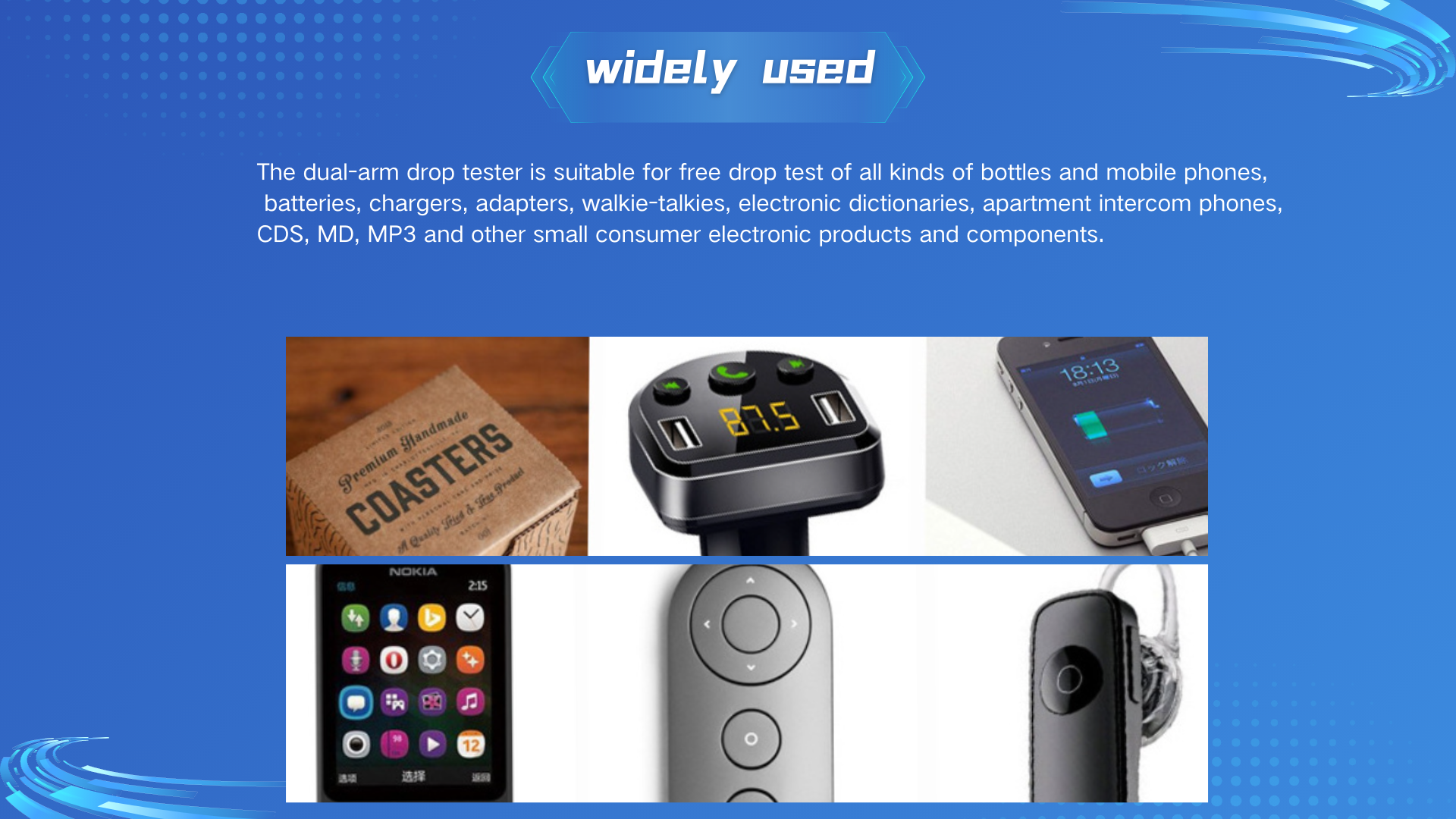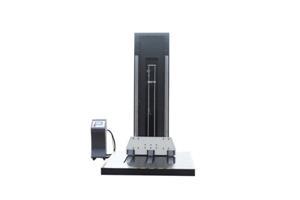Drop tester
Single-arm drop tester This machine is specially designed to test the damage of product packaging by falling
Condition, and assess the impact strength during transportation and handling;
Standard :ISO 2248 JIS Z0202-87 GB/T4857.5-92
Technology parameter
drop height mm | 500~1000℃ adjustable |
the maximum weight of the specimen kg | 0-80Kg |
| Bottom plate thickness | 10mm(solid iron plate) |
| the maximum size of the specimen mm | 800x800x1000 |
impact panel size mm:1700x1200 | Φ4mm nickel-chromium wire |
drop height error | ±10mm |
| the test bench dimensions mm | about 1700x1200x2315 |
| net weight kg | about 300kg |
test mode | face, Angle, edge all-round drop; |
| Control mode | electric |
| Drop height error | 1% |
| The Angle error between the falling surface and the level in the falling process | ≤1 degree |
| Power supply | 380V1, AC380V,50HZ; |
| Power | 1.85KWA |
Feature
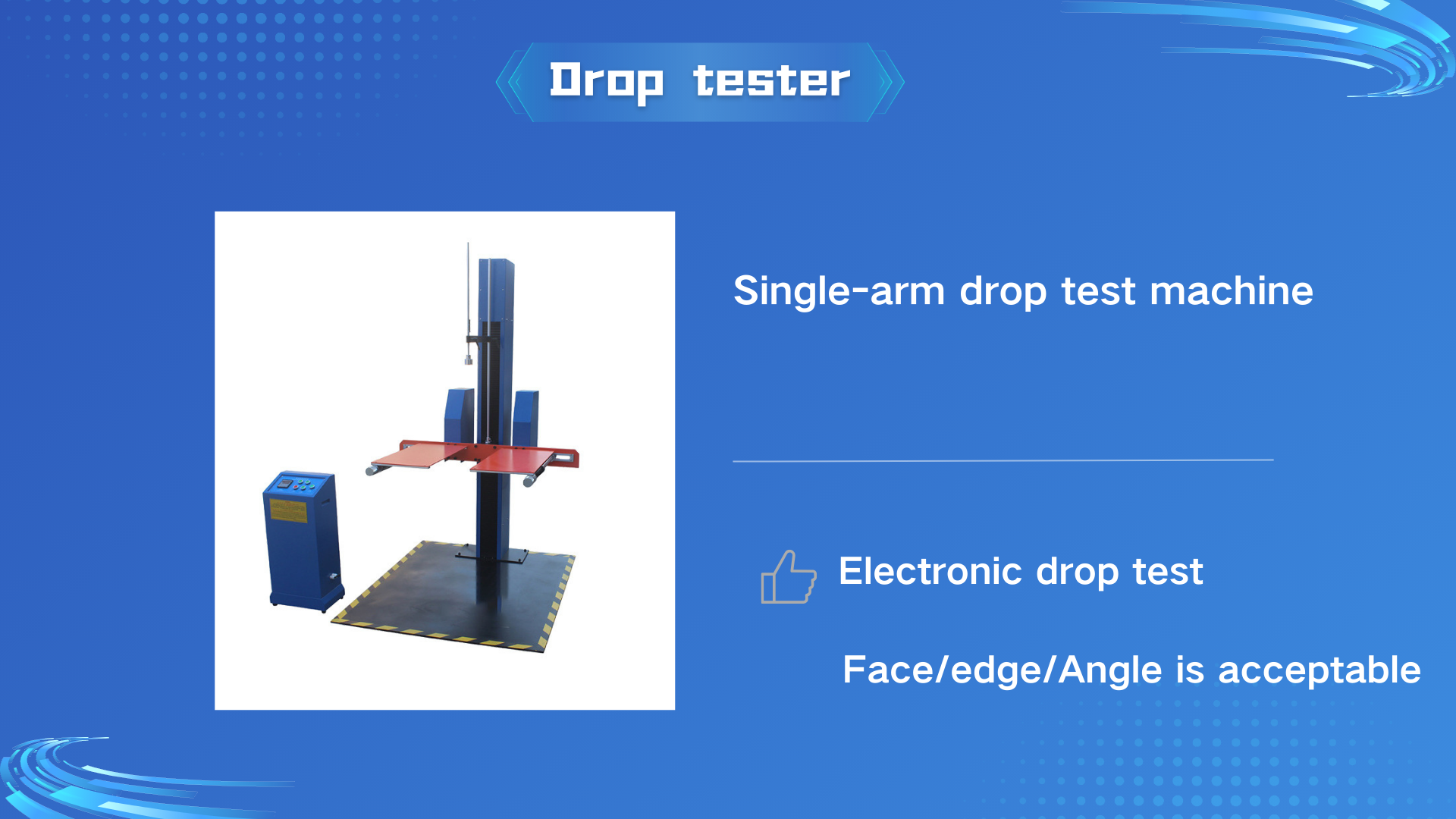
While the core function of simulating free-fall drops to evaluate packaging damage and product impact resistance is fundamental, modern single-arm drop testers represent a sophisticated blend of precision engineering, programmable control, advanced measurement, and safety-focused design. This expansion delves deeply into the critical characteristics defining their capabilities beyond the basic description, highlighting the technological nuances that enable rigorous compliance with ISO 2248, JIS Z0202-87, GB/T 4857.5-92, and other global standards for transportation packaging testing.
Precision Drop Height Control & Repeatability:
High-Resolution Height Setting: Advanced systems employ digital encoders or laser distance sensors integrated with the lifting mechanism. This allows height setting with resolutions often finer than 1 mm (e.g., 0.1 mm), crucial for precise threshold testing and replicating specific drop scenarios defined in detailed test protocols.
Programmable Height Sequences: Beyond single drops at a fixed height, modern testers allow programming complex sequences: multiple drops at the same height, progressive drop heights (step-stress testing), or alternating heights on different faces/edges. This automates rigorous evaluation protocols like sequential edge-corner-face drops.
Guided Free-Fall Mechanism: The "single-arm" typically incorporates precision linear bearings or low-friction guide columns ensuring the drop table/platform falls truly vertically with minimal friction, lateral sway, or rotation. This is critical for achieving consistent, repeatable impacts that accurately simulate a free fall without parasitic forces influencing the result. Strict adherence to the "free-fall" principle in standards demands this.
Automatic Height Locking/Release: Upon reaching the programmed height, the mechanism securely locks the drop table. Release is typically via a rapid, positive-action solenoid, pneumatic cylinder, or motor-driven latch to ensure instantaneous and consistent detachment, eliminating "dwell time" that could affect the initial impact dynamics.
Versatile Specimen Mounting & Orientation Control:
Interchangeable Surfaces: Hard, rigid steel plate (standard), adjustable hardwood planks (per some standards), specialized surfaces like grating, concrete, or inclined planes to simulate specific impact scenarios (e.g., hitting a pallet corner).
Fixture Mounting: T-slots, threaded holes, or clamping systems allow the attachment of custom fixtures: product-specific holders, inclined platforms for angle drops (beyond the rotation head's capability), or fixtures to test palletized loads.
Size & Capacity: Platforms range from small (e.g., 600x600mm) for individual cartons to large (e.g., 2000x2000mm+) for full pallets or large appliances. Load capacities scale accordingly, from 50kg to 1000kg+.
Continuous 360° Rotation: For precise positioning of any face, edge, or corner downwards.
Angular Indexing: Programmable stops at common angles (0° for face, 90° for edge, specific angles like 30° for corners) based on standard requirements (e.g., specific corner angles defined in JIS Z0202-87).
Fine Adjustment: Micrometer-like adjustments for perfect alignment of corners or specific impact points.
Multi-Axis Rotation System: The core of the single-arm design is the rotating head attached to the lifting arm. High-precision systems offer:
Adaptable Drop Table/Platform:
Securing Mechanisms: Vacuum systems, pneumatic clamps, straps, or adjustable brackets ensure the test specimen remains securely fixed in the programmed orientation throughout lifting and releases instantly upon drop initiation.
Details
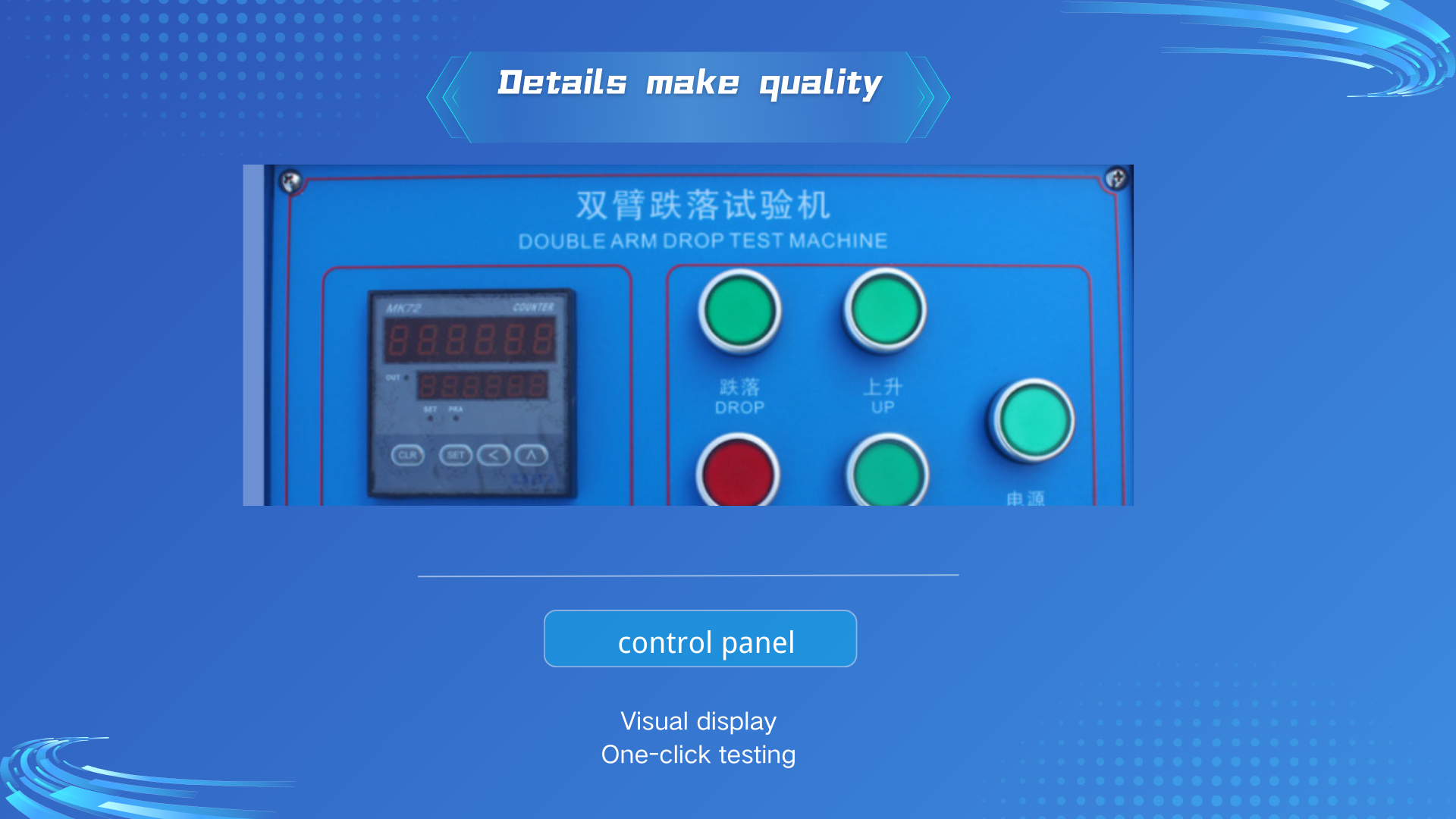
![]()
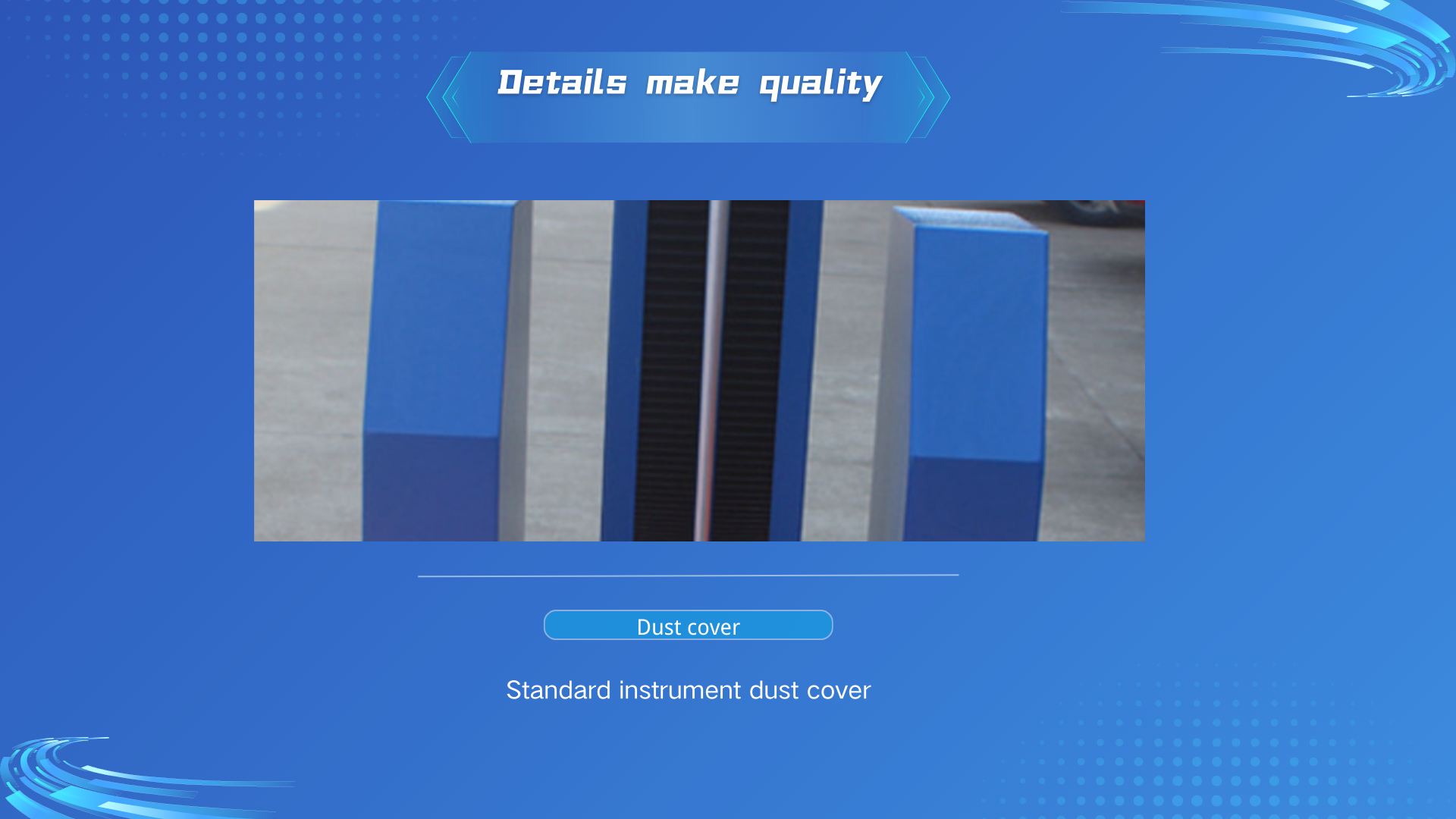

Application
